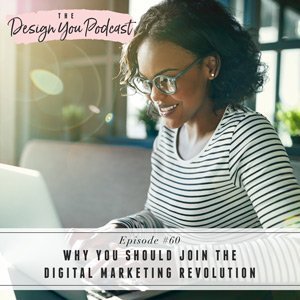

There are some topics that are just super important, and what I’m bringing you on the podcast this week is one of those pivotal discussions. Implementing a digital marketing system into my business is one of the coolest things I’ve done for myself, and friends, it’s making me a lot of money.
I love being an entrepreneur, and I love thinking about how I can make money even while I sleep. There’s a lot of resistance, especially in the design industry about taking your business online, but it was the biggest game-changer I’ve experienced in my business in the last 10 years, and I’m breaking down everything you need to know about this business model to get you on board.
Tune in to get a taste of what digital marketing looks like, and why I’m so excited to get more of you to make the switch in your businesses!
To show you what a digital marketing strategy looks like, I’m bringing you my free Digital Marketing Primer E-series. It’s 12 emails that are super packed with all kinds of useful information about how you can start implementing this into your business, so make sure you check it out!
And if you want more hand-holding throughout this process, you can email me to find out how you can create a digital marketing system or find out how my Design You coaching program will help you do this!





